Fishing Report: Great white hookup is latest in growing list of local shark stories
There are shark stories and then there are SHARK STORIES.
For those around here who fish offshore, and increasingly for those who remain inshore, the exploding shark population has become a real pain in the aft.
Well, it might’ve all come to a head — a giant, torpedo-shaped, tooth-filled head.
“When it came swimming by the boat the first time, it looked like a submarine,” Capt. Scott Housel says of last week’s encounter — and eventual hook-up — with a great white shark, which isn’t a total stranger to our parts but still a rarity.
Housel operates the Sudden Strike charter out of his 31’ Contender, a wonderful vessel that must’ve seemed smaller last Thursday as the great white decided to hang around for about a half hour — all while Housel’s party of four gawked at the large, loitering predator. They were 20 miles offshore in 85 feet of water.
“He stayed about four feet below the surface, and there was a decent wind chop, so it was hard to get a clear picture or video,” Housel says.
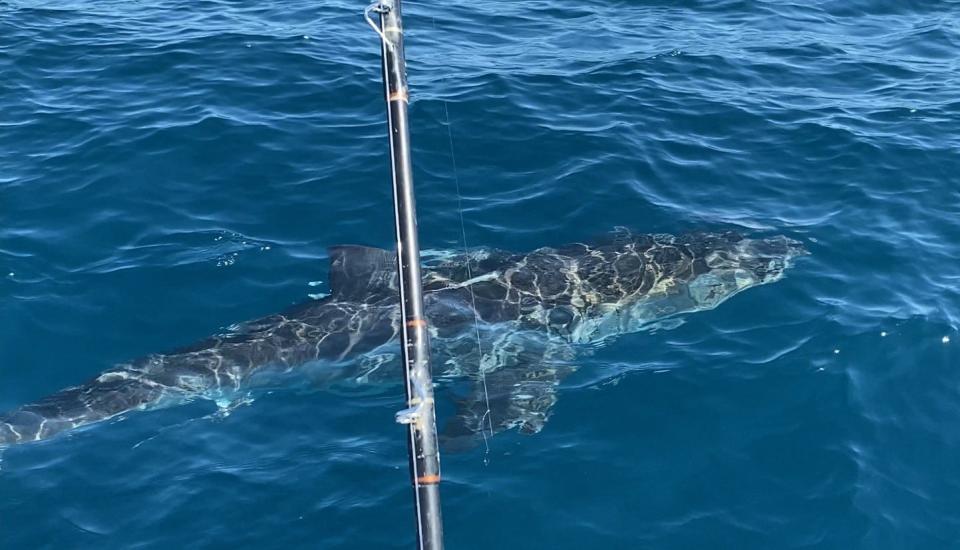
NSB SHARK HUNTERS Shark Week? No, it's a nightly event for this New Smyrna Beach fishing guide
ON THE HALF-SHELL Oysters in summertime? No problem, IROC has you covered (in butter?)
Eventually, the shark disappeared.
But not for long.
“We went back to fishing after he disappeared. Then, the guy up in the front left corner of the boat, suddenly his line is straight out that way,” Housel says, pointing toward the eastern horizon.
Since the double-rig hooks were only holding inch-long pieces of squid, Housel suspects the great white wasn’t actually bothering with the bait, but may have gotten too close to the line and was snagged by the hook.
The 60-pound-test braid was quickly singing. Housel cranked the twin Suzuki 300s and gave chase.
“We chased it down and chased it down, for about an hour,” he says. “Eventually we were two miles away from where we started.
“It got to the point that he was tired enough and didn’t want to run any more. We kept him about 10 feet from the boat. I didn’t want him too close, where he might be thrashing his tail — I didn’t feel like paying for fiberglass repair. And when you have guests, you’re careful because of the liability, too.”
So the drag was fully tightened and the line popped, and Housel had a different type of shark story to tell. Usually, those tales trend more toward frustration than excitement.
It’s a rare offshore trip that doesn’t include one or several half-eaten fish reeled to the boat. Sharks have no pride when it comes to their stomachs and have no qualms about attacking your catch. Hemingway's Old Man knew all too well of this rude behavior.
Housel has been fishing and diving off our coast for nearly 25 years, and says the past few years have produced a dramatic jump in the shark population.
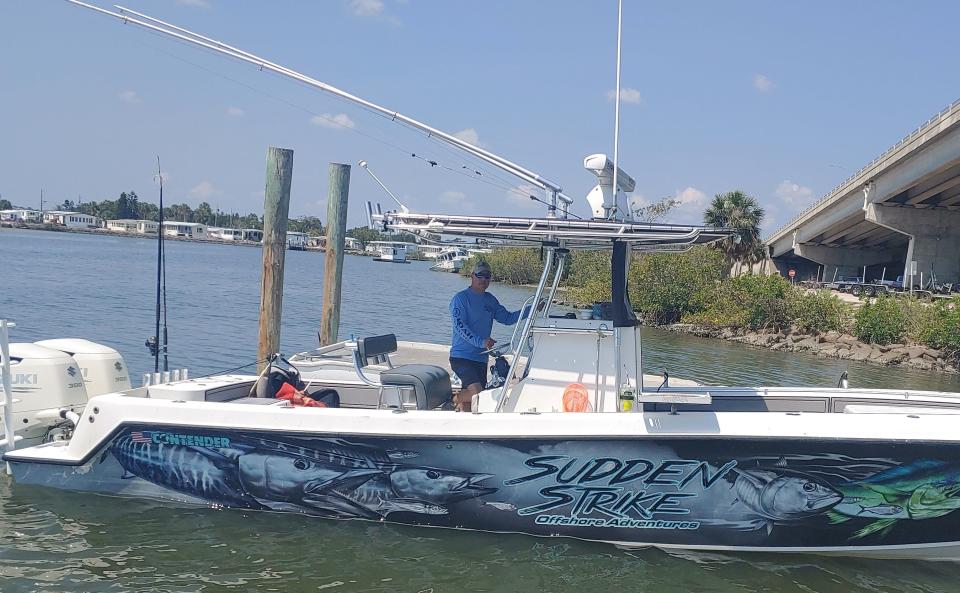
“We used to go out here diving, and we’d see one sandbar shark every four or five trips,” he says. “It was a pleasure, and it was neat to see a shark. You’d come in and say, ‘hey, we saw a shark today.’ Now, though, you’re gonna see three or four sandbar sharks every dive.
“Yesterday we were fishing about 32 miles out. At one point we counted five below the boat.”
More and more, it’s not just offshore.
“About five or six years ago I started seeing sharks more and more in the backwaters from Ponce Inlet to Flagler County,” says Capt. Billy Pettigrew, who operates his Come’n’GetIt charter boat throughout the intracoastal. “Over the course of a few years, it’s blossomed to where they’re everywhere.”
A paying customer, particularly a tourist from the Midwest, is generally thrilled to hook a shark and file that unique fishing story for the folks back home. However …
“But for me, I’ve seen a decline in redfish, snook and trout in these areas,” Pettigrew says. “I know in the warmer months you see more sharks, but I’m seeing them year-round. And areas where schools of redfish would gather in the winter, now there are sharks lurking.”
Why? Along with stricter shark-fishing laws enacted in recent years, Housel also theorizes about the always lurking unintended consequences.
“I think it could have something to do with the number of red snapper in our area,” he says. “We’ll go out, and 85% of what we catch is red snapper.”
All must be safely returned to the water, except for those two days a year offshore anglers on our coast are allowed to keep them. That’s a long, head-shaking story for another day, but if the ever-thickening population of red snapper is indeed leading to a growing shark habitat around here, it might be time to experiment with those federal limits on both sharks and snapper — dare we dream?
Halifax/Indian River
Hearing and reading more about the summer flounder party getting started.
Compared to two or three months back, your flounder catches are likely to be lighter in color, perhaps heavier in weight, with eyes on the left side of the head instead of the right.
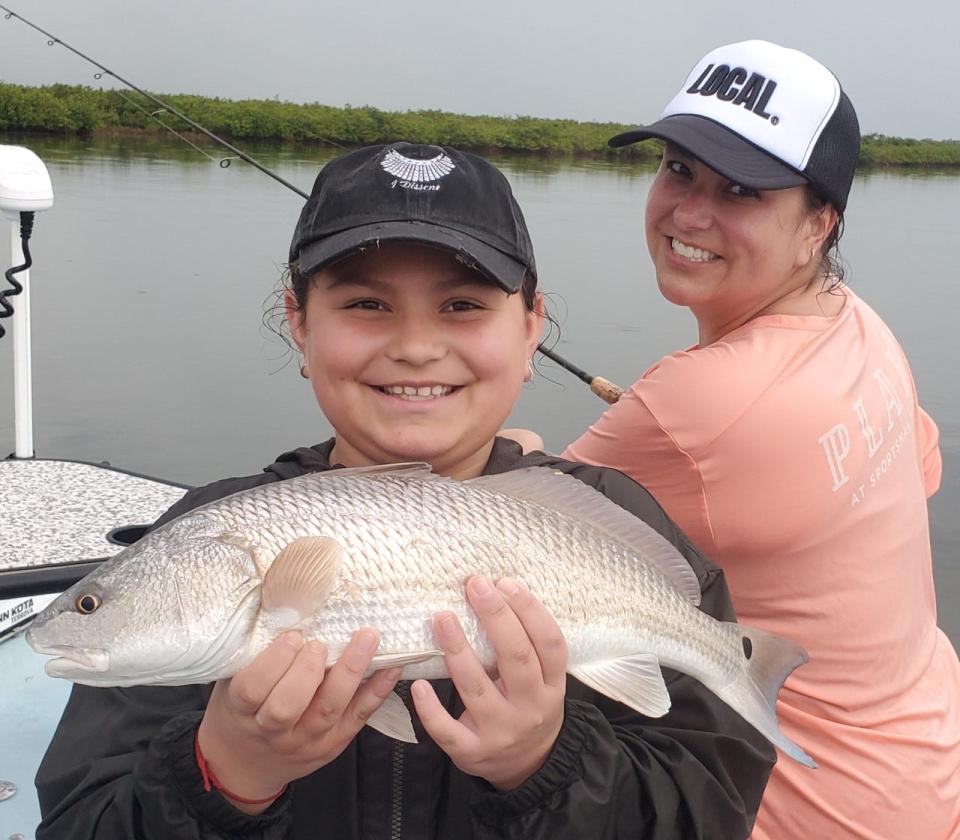
But a rose by any other name tastes the same. While many anglers simply chuck for luck, others like to target, and targeting flounder is fairly simple: Find structure (dock piling, etc.), cast into the current and let your bait bounce along the bottom, slowly, with the current.
Flounder aren’t exactly go-getters. They sprawl out like a doormat, awaiting company, facing the current and pouncing on any little morsel floating by and close enough for a quick grab.
Capt. Jeff Patterson (Pole Dancer) says he’s seeing some hot feeding frenzies as baitfish are swarming the intracoastal.
The standout for him this past week has been seatrout, which he’s been catching around oyster bars and docks, mostly with pigfish and croakers under a cork or simply free-lining.
He also says he found some reds and snook around the docks, as well as flounder.
“Lots of flounder in the river right now,” confirms Ike Leary up at Granada Pier Bait & Tackle.
Surf
The “pompano run” became more of a loitering session beginning last fall. They never did totally turn off, except when high winds or seaweed interfered.
Now, near the end of what would normally be the springtime south-to-north migration, they’re around in big numbers — six per day is your allowable number, by the way. Pompano fishing is certainly helped by the return of (small) sand fleas to area bait shops.
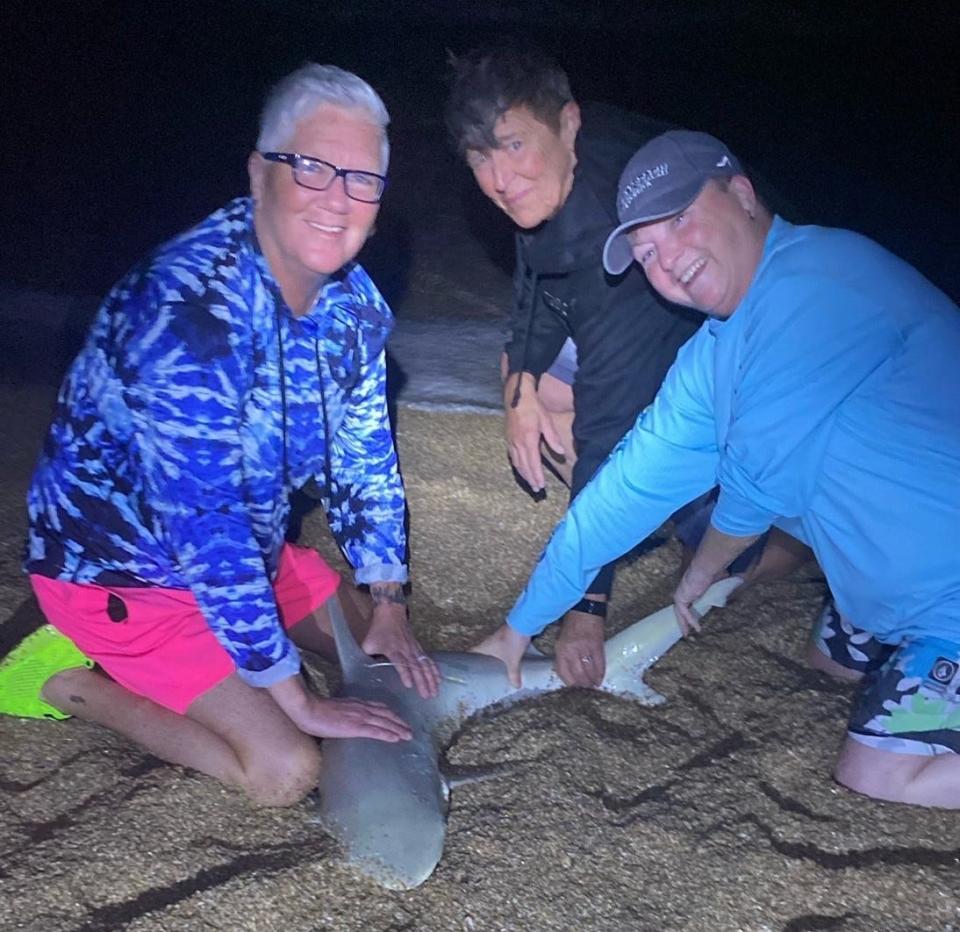
Offshore
With conditions finally making their way into the “consistently navigable” range, those who can afford the gas are making their way out into the deep, deeper and deepest, dropping lines for non-red snapper, grouper and other reef prizes.
This time of year, more economical runs just off the coast start resulting in mahi catches. Brilliantly colored and tasty to boot, the mahi does us the extra favor of being quite plentiful, which is evident with its daily bag limit of five per angler, or 30 per vessel, whichever is smallest.
St. Johns
Bluegill season is officially cranked to life out west along the St. Johns River.
As Capt. Bryn Adams was reporting midweek from Highland Park Fish Camp, Capt. James Hillman was returning with a fishing party that limited out using live crickets. And speaking of plentiful, the bluegill limit is 50 per day.
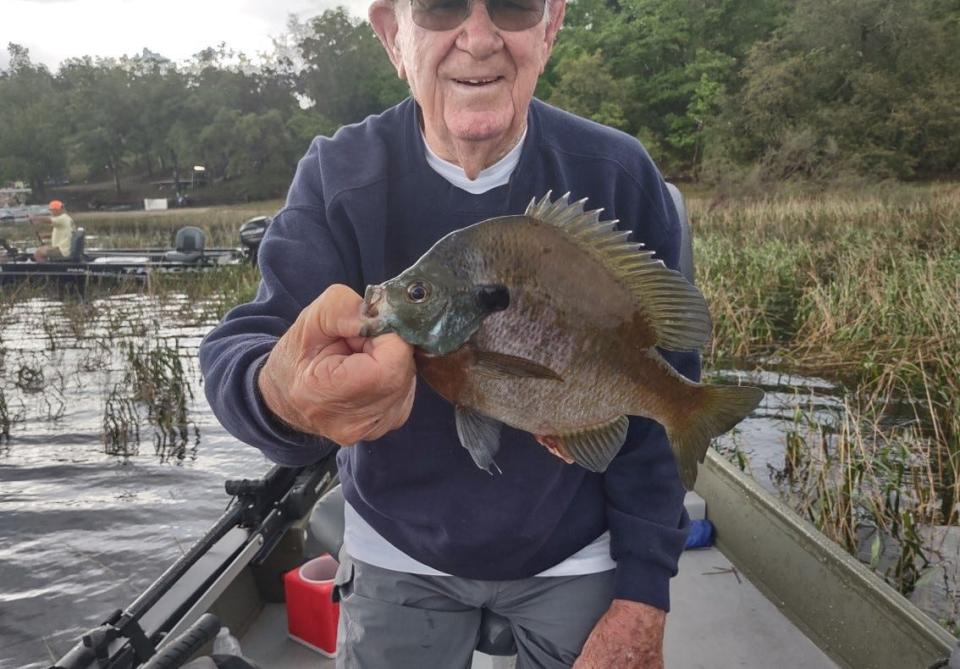
Also, Bryn says, “bass fishing is remaining steady but fair.”
“We’re seeing some schooling action on Lake Dexter as well as the main river.”
Upstream (or is it downstream?) in Astor, just beyond the bridge at South Moon Fish Camp, Kerry McPherson says the striped bass are still “decent” in the main river and near the mouth of Lake George, but all bass should start feeding harder late next week with the new moon.
Kerry says he’s still seeing more nighttime anglers these days.
“We still have people going down to the bridge at night fishing for crappie,” he says. “It’s never been a big thing around here but maybe it’s starting to catch on.”
Halifax Sport Fishing Club
Next Thursday’s (May 18) monthly HSFC meeting will include a seminar from Zach Savich on boat and trailer maintenance and safety. Zach is co-owner and operator of Two Brothers Boat Rentals.
According to the club’s press release, Zach’s discussion will include tips on backing up your trailer — not that you need it, of course!
As always, these things are open to the public at no cost. Doors open at 6:30, a brief club meeting gavels at 7, and the seminar starts at 7:30.
Hook, line and clicker: Send us your fish pics

We want to see your most recent catch. Email your fish photos to ken.willis@news-jrnl.com.
Please include first and last name of angler(s), as well as type of fish (we're occasionally stumped). All are included with our online fishing report, and some occasionally make the print edition.
Do I need a fishing license
You can find all the license info, including exemptions, on Florida's Fish and Wildlife Commission website: MyFWC.com. But the basics are: No: If you're 65 or older, 15 or younger, you don't need a license. No: If you're fishing with a licensed guide or charter boat, both of which purchase commercial licenses that cover their customers. Yes: Most everyone else, including visitors from other states. Yes: Even if you're a shore-based angler (shoreline, dock, pier, bridge, etc.). However: The shore-based license is free . . . But: You still need to register for that free license.
Where do I get a license and what does it cost?
Many bait shops sell licenses, as do the bigger retailers (Bass, Dick's, Walmart, etc.). Florida's FWC uses a third-party site for buying or renewing fishing licenses: GoOutdoorsFlorida.com. The cost: $17 for an annual license. Don't forget: Whether you're fishing fresh or saltwater, you need the specific license. Freshwater and saltwater licenses are both $17 annually.
I’m here on vacation, do I need a license?
Yes you do, and they're also available at GoOutdoorsFlorida.com or certain bait shops and big retailers. Cost: $17 for three days, $30 for seven days, $47 for a year.Also: Non-residents need to purchase that license even if they're just fishing from shoreline or shore-based structures. (Florida residents need that license, too, but they're free.)
This article originally appeared on The Daytona Beach News-Journal: Great white hookup, off Ponce Inlet, is area's latest shark story

